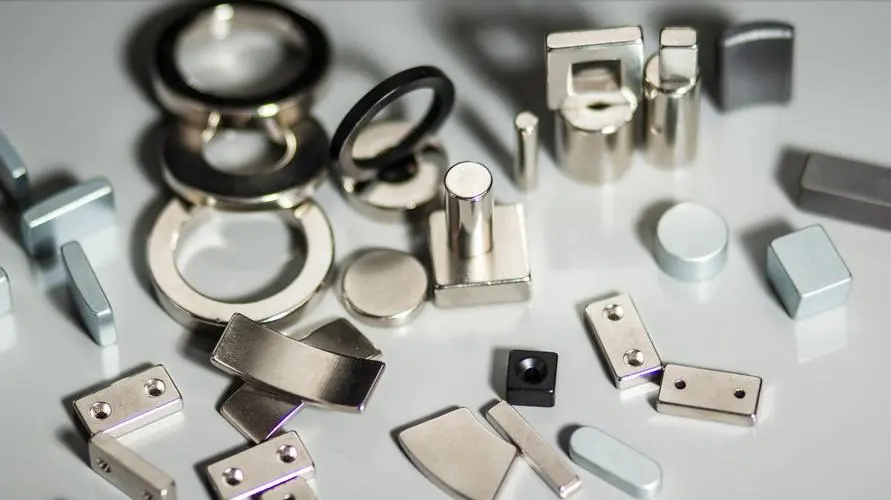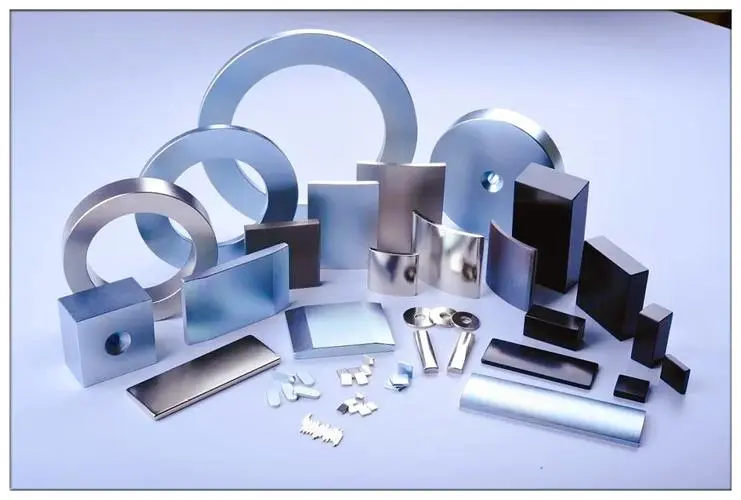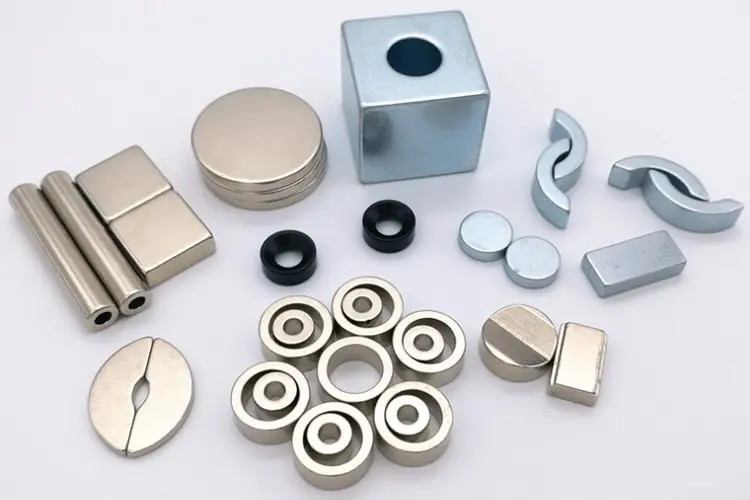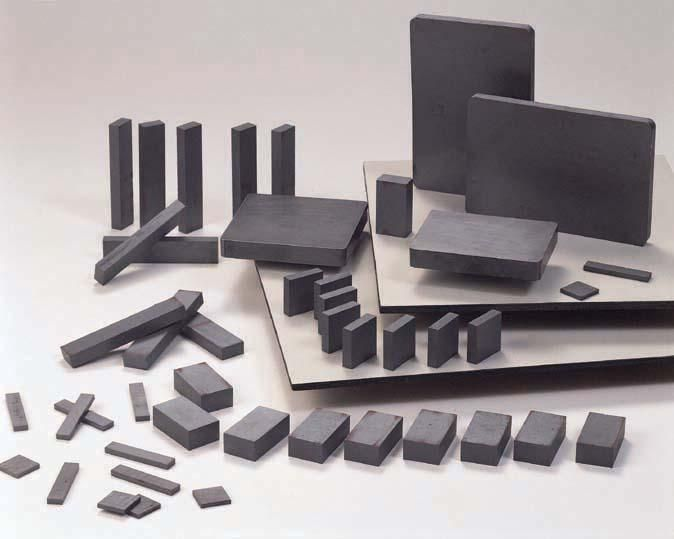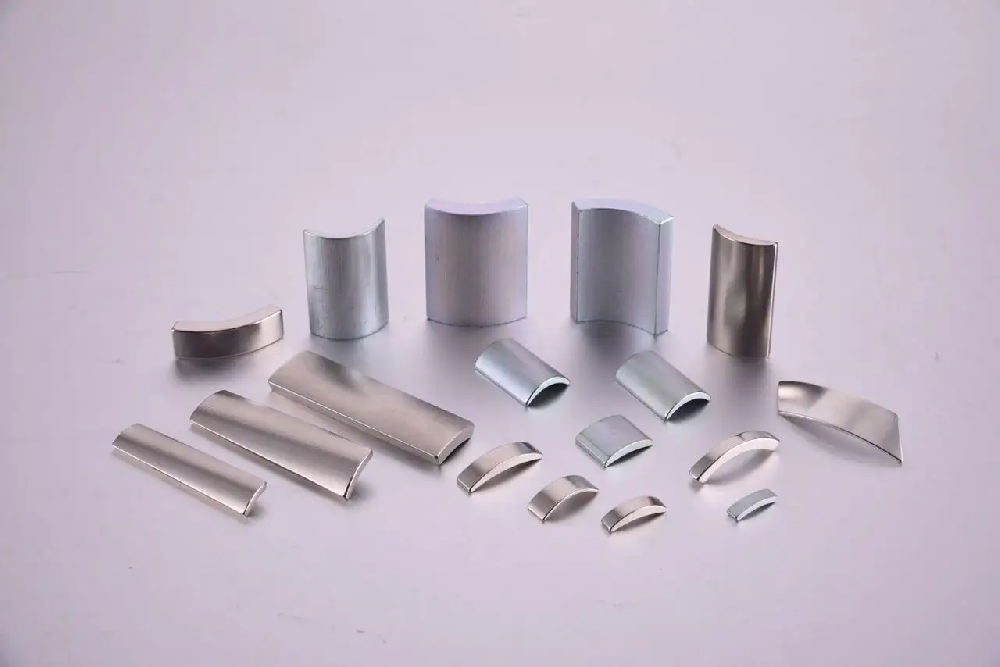(1) Introduction to the Characteristics of Strong Magnets
Strong magnets refer to powerful magnets. Their professional names are rare earth powerful magnets and Neodymium magnet. These magnets usually have very high characteristics and are widely used in children's toys, packaging boxes, lighting fixtures, craft gifts, loudspeakers, medical equipment, health care products, electronic equipment, five gold construction materials and other commodities. Generally, N33, N35 and N38 are the most suitable. These three are the most common performance indicators of neodymium iron boron permanent magnets, If the requirements of the regulations are not too high, these types of characteristic magnets will be similar.
High performance above N40: This feature is generally used in smartphones, precision machinery, aerospace, and cutting-edge scientific research, and can be divided into N40, N42, N45, N48, N50, and N529 types. All of the above characteristics are resistant to high temperatures of ≤ 80 ℃, and demagnetization may occur above this operating temperature.
(2) Magnetic material grade
1. Magnetic material grade
In order to easily distinguish the permanent magnet materials with different raw materials and help us understand, most manufacturers use fixed English alphabet to indicate different magnets, for example, the most common one is N35 magnet. N means the magnet is a black anti-static tweezers, Y means the Ferrite core, and if it is PCx, such as PC40, it is a high permeability soft magnetic material permanent magnet ferrite.
2. Permanent magnet material model
The types of neodymium iron boron magnetic materials are composed of three main categories: the main name and two magnetic properties. The first part is the main name, simplified by the chemical element symbol ND of neodymium element to N, the second part is the rated value of the very large magnetic energy product (BH) max of the raw material (in KA/m3), and the third part represents the highest working temperature of the magnet. Model example: N35H indicates a permanent magnet material with a maximum (BH) of around 35MGOe (280kA/m3) and a very high operating temperature of 120 ℃.
The grades of black anti-static tweezers magnetic materials include: N30~N52; 30H~50H; 30SH~50SH; 28UH-40UH; 30EH to 35EH, etc.
3. Operating temperature corresponding to different specifications
The maximum operating temperature corresponding to different models and specifications is basically the same for each manufacturer:
1) There is no English alphabet behind the data information, for example: N35 high temperature resistance is generally ≤ 80 ℃
2) The data data ends with M, for example, N50M is generally resistant to high temperatures at ≤ 100 ℃
3) The data ends with H, for example, N48M generally has a high temperature resistance of ≤ 120 ℃
4) The data is followed by SH, for example, N45SH is generally resistant to high temperatures of ≤ 150 ℃
5) After the data, it ends with UH, for example: N35UH is generally resistant to high temperatures of ≤ 180 ℃
6) After the data, end with EH, for example: N50M generally has a high temperature resistance of ≤ 200 ℃
7) After the data, end with EH, for example: N50M generally has a high temperature resistance of ≤ 220 ℃
The last five characteristics are all high-temperature resistant. If the ambient temperature exceeds the predetermined temperature, the magnet will demagnetize.
And high-temperature resistant magnets, such as 38SH, are high-temperature resistant magnets of 150 degrees Celsius, with magnetic properties equivalent to N38 at room temperature. It should be mentioned here that at the same ambient temperature of 70 degrees, the working characteristics of the 38SH are much better than those of the N38, of course, not to mention 90 degrees and over 100 degrees. Black anti-static tweezers are the most resistant to high temperatures, and the N model specification magnet is very large and has a high temperature of 80 degrees.
(3) Remanence magnetism
Short for residual magnetization, symbol Br. Residual magnetic Br: after permanent magnetic material is magnetized to technical saturation and external electromagnetic field is removed, the retained Br is called residual Magnetic flux density.
(4) Introduction to Coercivity
The unit of Coercivity is Oe or A/m, 1A/m=79.6Oe. The Coercivity is divided into magnetic induction coercive force (Hcb) and intrinsic Coercivity (Hcj).
1. Magnetic induction Coercivity
When the electromagnetic field is magnetized in the opposite direction, the value of the opposite direction Magnetic flux density required to reduce the Magnetic flux density to zero is called the magnetic Coercivity. But at this point, the magnetization of the electromagnetic field is not zero, but the applied reverse magnetic field strength and the magnetization effect of the electromagnetic field are mutually complementary. The external Magnetic flux density is zero. At this time, if the external electromagnetic field is removed, the electromagnetic field still has certain magnetic properties.
2. Intrinsic Coercivity
The reverse Magnetic flux density required to reduce the magnetization of the magnet to zero is called intrinsic Coercivity. The intrinsic Coercivity is a physical quantity that measures the ability of electromagnetic field to resist demagnetization, and it is the Coercivity that indicates that the magnetization M in the raw material recedes to zero. In the use of electromagnetic field, the greater the Coercivity of electromagnetic field, the better the stability of ambient temperature.
(5) Large magnetic energy product
The very large magnetic energy product means the magnetic energy density formed by the magnet in the air gap range (the space between the two magnetic poles of the magnet), which is the static magnetic energy per unit volume of the air gap. Because this energy is equivalent to the product of Bm and Hm of a magnet, it is called the magnetic energy product.
(6) Working temperature
The specifications of the magnet model range from N35 to the current very large N52 based on the magnetic properties of the magnet. Some manufacturers have N44 classification, some have direct N45 classification, and others have roughly the same classification. N series up to 80 degrees; M series up to 100 degrees; H max 120 degrees; SH maximum 150 degrees; UH up to 180 degrees; EH up to 200 degrees; The highest AH is 220 degrees.
(7) Surface treatment (coating)
Neodymium magnet coating: nickel, copper, chromium, gold, black zinc, epoxy resin. The surface electroplating process is different, with different colors and storage time periods, each with its own advantages and defects.
1. Galvanization
The surface appears silver white and can withstand corrosion for 12 to 48 hours. It can be used for bonding with certain adhesives (such as AB adhesive). If the electroplating process is good, it can be stored for about two to five years. Its main advantage is that the price is relatively low.
2. Nickel plating
It looks stainless steel in color, and when left in the air, the surface layer is not easily oxidized by the air. It has a beautiful appearance and good brightness, and the electroplating process can withstand 12 to 72 hours of salt spray testing. Its main drawback is that it cannot be bonded with certain adhesives, as it may cause the coating to peel off. Accelerated air oxidation, currently the nickel copper nickel electroplating process is commonly used in the market for 120 to 200 hours, but its electroplating process cost is relatively high.
3. Copper plating
It often appears in the hardware and building materials industry, and black anti-static tweezers are rarely used in the field, with a yellow appearance.
4. Chromium plating
The field of chromium electroplating is also relatively rare, and its electroplating process cost is high, which is generally unacceptable to companies. But its anti-corrosion ability is strong and it is difficult to react with other substances. The key lies in areas with strong acidity and alkalinity, and the prices of domestic products are relatively low, so there are very few people choosing.
5. Black zinc plating
According to customer requirements, the surface of their products is treated to black. In terms of electroplating process, it is mainly necessary to undergo chemical treatment and add a layer of black protective film on the premise of galvanizing. This film can also have the function of maintaining the product, increasing the duration of salt spray testing, and extending the duration of air oxidation. But its surface is very easily scratched, losing its protective effect. Nowadays, there are very few people using it, and most of them are replaced by epoxy resin.
6. Plating
This field is now very popular, and some of the yellow gold jewelry we see on the street is mostly plated with gold or copper. Gold plating makes the appearance of the product look like gold, very attractive, and is usually suitable for the jewelry field. Magnetic stone products can also be gold plated for magnetic jewelry.
7. Epoxy resin plating
After nickel plating, apply a layer of resin paint on the outside. This manufacturing industry has only had a market in the past two years. Its development trend is fast. Nowadays, more and more people are using various electroplating products. Its biggest advantage is that it can achieve the desired appearance color.
(8) Is the size of permanent magnet magnetism related to residual magnetism, surface magnetic size, magnetic energy product, characteristic model specifications?
The residual magnetism is proportional to the surface magnetism. To enhance magnetism, it is necessary to strengthen residual magnetism. To enhance residual magnetism, it is necessary to increase the rank. The larger the model and specification, the larger the residual magnetism, and the larger the magnetic energy product.
笔记
双语对照
 China
China English
English

